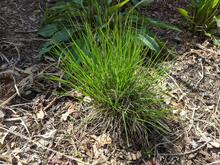URBANA, Ill. – Illinois is known as the “Prairie State” and has several native prairie plants. These plants are good options to include in the landscape because they evolved with the climate, soils, and pathogens in this habitat for thousands of years.
Native prairie plant species have advantages:
- Extensive root systems make prairie plants resistant to drought and dry conditions
- Native prairie plants can reduce soil erosion.
- Prairie plants have few insect and disease problems.
- Once they’re established, prairie plants need minimum maintenance.
- Prairie plants provide habitat for birds and other grassland animals.
- Several native plants, such as milkweed,s are necessary for native insects.
- Using native plants can cut down on exotic invaders to gardens.
Prairie plants are best planted in the spring. Late fall is the best time to sow prairie plant seeds directly. You can purchase native plant species from reputable local nurseries or catalogs. Usually, plants from a local source are adapted to your area. Avoid digging native plants from the wild.
While there are many noteworthy prairie plants, some favorites include prairie dropseed, little bluestem and purple prairie clover.
Prairie dropseed (Sporobolus heterolepsis), also called northern dropseed, is a clump-forming, warm-season native grass. The graceful arching leaves give the plant a fountain-like appearance. Prairie dropseed is a very good native grass for the landscape as it will tolerate a wide range of soils, including clay. Full height of the plant in flower is 2 to 3 feet and spread is 2 to 3 feet across. In late summer, open-airy flower heads appear on thin stems which rise above the clump of foliage. Pink and brown-tinted flowers are borne in sparse clumps at the end of the stem. The foliage turns golden with orange hues in the fall, fading to light bronze in the winter. The plant gets its name from the tiny rounded seeds, which drop to the ground in autumn when mature.
Little bluestem (Schizachyrium scoparium) has bluish stems that change from orange to russet red color throughout the fall and winter. Little bluestem’s common name refers to the bluish coloration at the base of the stem. It reaches a height of 2 to 4 feet and has a dense root system which may reach 5 to 8 feet deep. Fluffy white seed heads are produced in late summer on arching stems.
Purple prairie clover (Dale purpurea) is a slender plant that grows up to 2-feet tall. In June and July, purple thimble-like flowers are produced at the ends of the stems.
The Illinois Department of Natural Resources publication Prairie Establishment and Landscaping by William E. McClain has a list of sources for native Illinois prairie plant seeds.
University of Illinois Extension is the flagship outreach effort of the University of Illinois at Urbana-Champaign, offering educational programs to residents of all of Illinois' 102 counties and far beyond. Illinois Extension provides practical education you can trust to help people, businesses, and communities solve problems, develop skills, and build a better future. Through our Agriculture and Natural Resources programs, Illinois Extension supports the economic viability and environmental sustainability of natural and managed landscapes and productive lands in Illinois. Horticulture program educators provide research-based information and training about gardening, fruits and vegetables, flowers, insects and diseases, composting, landscaping, and more.
News source/writer: Jennifer Fishburn, Horticulture Educator, Illinois Extension
